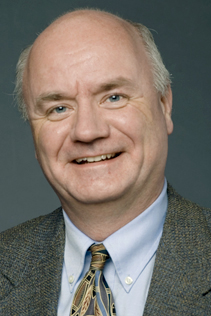Spring 2012
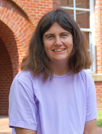 |
|
| Lynn Kistler |
Lynn Kistler of the Space Science Center (SSC) received the 2012 Karen Von Damm Leadership Development Grant from the UNH ADVANCE program. The grant, funded with support from the National Science Foundation, is part of an ongoing effort to support the advancement and leadership of women faculty in the science, technology, engineering and mathematics (STEM) disciplines at UNH. The award will enhance Kistler's leadership roles both at the university and within the scientific community and allow her to concentrate on the Concept Study Report and NASA site visits towards the Japan Aerospace Exploration Agency's "cross Scale COupling in Plasma universE" or SCOPE mission. A team led by Kistler was selected by NASA to proceed with an 11-month concept study for UNH's Ion Mass Spectrum Analyzer on the mission.
SSC project manager John Macri reports that significant milestones have been reached in the extensive work being done on NASA's Magnetospheric Multiscale (MMS) mission. With the design and design qualification stages now behind them, the MMS "FIELDS" team is engaged in the fabrication, assembly, and test of the flight hardware – suites of sensors and controlling electronics for the four identical satellites comprising MMS. Testing for each item includes a gauntlet of environmental trials to verify the space flight readiness of the hardware.
Fatima Ebrahimi of the SSC was an invited lecturer at the joint Center for Momentum Transport and Flow Organization in Plasmas and Magnetofluids (CMTFO)/Center for Magnetic Self-Organization (CMSO) Winter School 2012 held in San Diego January 9 -12. The CMTFO is a plasma science center sponsored by the U.S. Department of Energy Office of Fusion Energy Sciences and brings together astrophysical and magnetic fusion theorists, experimentalists, and computationalists from multiple institutions. The CMSO is a National Science Foundation Physics Frontier Center.
 |
The book Shifting Baselines: The Past and the Future of Ocean Fisheries, for which Karen Alexander of OPAL is coeditor, received a long, laudatory book review in the March issue of Oceanography, the official magazine of the Oceanographic Society. The term "shifting baselines" refers to the way in which significant changes to an ecosystem are measured against previous baseline states, which themselves are quite different from the original state of the system. The book, writes reviewer Alistair J. Hobday, "provides a unique historical perspective on the evolution of knowledge and scientific thinking around shifting baselines. Editorial overviews preceding each of the five sections of the book do an outstanding job of contextualizing the chapters that follow."
EOS associate director and ESRC professor Scott Ollinger will give an invited keynote address at the Eastern Regional Photosynthesis Conference being held at Woods Hole, Mass. in April. Ollinger was asked to speak about his recent paper "Sources of variability in canopy reflectance and the convergent properties of plants."
 |
On January 31st, investigators on NASA's Interstellar Boundary Explorer (IBEX) mission, including UNH space physicist Eberhard Möbius, presented significant mission findings at a press conference from NASA headquarters in Washington, D.C. in conjunction with the publication of six papers in the February issue of The Astrophysical Journal (ApJ) Supplement Series by IBEX team members. The findings described the first detailed analyses of samples of captured interstellar neutral atoms – the raw material or "star stuff" for the formation of new stars, planets, and human beings. In addition to the detailed analysis of the atoms, the findings are important because the interstellar gas surrounding us can affect the strength of the sun's heliosphere - the protective bubble that shields our solar system from dangerous cosmic radiation. UNH authors on the ApJ papers included Möbius, Nathan Schwadron, David Heirtzler, Harald Kucharek, Marty Lee, visiting professor Peter Bochsler, graduate students Trevor Leonard and Xian Wu, as well as former physics undergraduates George Clark, Morgan O'Neill, and Lee Petersen.
Jingfeng Xiao of the ESRC reports he organized and chaired a session titled "Impacts of Extreme Climate Events and Disturbances on Carbon Dynamics" at the AGU Fall Meeting. It was the largest session in the Biogeosciences Section and was well attended. Xiao also organized a special issue in Journal of Geophysical Research - Biogeosciences titled "Advances in Upscaling of Eddy Covariance Measurements of Carbon and Water Fluxes." All the articles and the introduction to the special issue have been published.
 |
|
| Alewife illustration by Ted Walke. | |
 |
|
| Blueback Herring illustration by Ted Walke. |
With the assistance of the Canadian government through a faculty research grant from the Canadian Embassy, Jamie Cournane and Christopher Glass of OPAL will expand their work on improving the coast-wide management of river herring into Canada (see "Catching a Share of River Herring" in Summer 2011 Spheres). Knowing that gaspereau (what many Canadians call river herring) cross multiple jurisdictional boundaries, including international ones, inclusion of Canadian data is paramount to improving fishery management. As part of the project, Cournane and Glass will travel to Maine, New Brunswick and Nova Scotia later this year to interview U.S. and Canadian managers, scientists, and fishermen in an effort to gather existing Canadian fishery and survey data.
As one of five, multi-year projects recently funded by NOAA through New Hampshire Sea Grant, Wilfred Wollheim of the Water Systems Analysis Group and the department of natural resources and the environment (in conjunction with William McDowell, professor of NREN and the NH Office of the United States Geological Survey) will deploy continuous in situ sensors on the Lamprey River to monitor nitrogen and organic carbon fluxes across storms, seasons, and years.
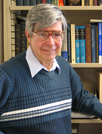 |
|
| Joe Hollweg |
Professor emeritus Joe Hollweg reports that in late February he gave an invited talk titled "The solar wind through the decades" at a conference in Leuven, Belgium celebrating the 20th anniversary of the founding of the Centre for Plasma Astrophysics at the Katholieke Universiteit Leuven. The event also celebrated the upcoming emeritus status of the Centre's founder Marcel Goossens who was a visiting scholar at the SSC beginning in summer of 1989 and returned regularly up to 2006. Hollweg and Goossens (as well as Marty Lee and graduate student Guang Yang) collaborated on work involving a process called "resonance absorption," which is a mechanism for dissipating waves in the solar corona and depositing the energy into heat, i.e. a theory for heating the corona.
Toni Galvin, Kristin Simunac, and Karen Burnett-Kurie attended the Spring 2012 National Space Grant Meeting in Crystal City, VA March 1-3 to represent the New Hampshire Space Grant Consortium (NHSGC). Galvin, director of NHSGC, was elected by the full membership of the National Council of Space Grant Directors into the Council's Executive Committee for a two-year term beginning July 2012. The national committee is comprised of directors from 52 Space Grant consortia, representing each of the states, the District of Columbia and Puerto Rico, and includes over a thousand affiliates nationwide.
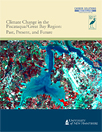 |
|
| Climate Change in the Great Bay Region |
Cameron Wake will give the keynote address at the March 29 workshop "Water, Weather, Climate and Community: Climate Change in the Piscataqua/Great Bay Region: Past, Present, and Future." The workshop is the fourth in a series presented by the NH Coastal Adaptation Workgroup (http://nh.stormsmart.org). The address will focus on the results of a recent comprehensive report on how the climate of New Hampshire's Piscataqua/Great Bay region has changed over the past century and how it will be affected by future human activities. Wake is lead author of the report.
EOS director Harlan Spence reports the UNH team for the Cosmic Ray Telescope for the Effects of Radiation (CRaTER) instrument onboard NASA's Lunar Reconnaissance Orbiter has received three Group Achievement Awards in the span of two years from NASA headquarters – an unusual feat. (See story in this issue of Spheres, "Moon CRaTER"). In addition to Spence, who is the principal investigator for CRaTER, Nathan Schwadron, Jody Wilson, Mike Golightly, and Sonya Smith were recognized by NASA for their work.
Amanda Plagge of OPAL will defend her Ph.D. dissertation at the end of March. Plagge's work focuses on data derived from a scatterometer – a type of radar that measures backscatter from the ocean surface and infers wind speed and direction. The work involves validating ocean winds from satellites in areas of complex air-sea dynamics, and her dissertation shows that these winds can be trusted even in areas of strong surface currents and sea surface temperature fronts. "This validation is important for a variety of fields and applications, including, for instance, some studies of climate change that focus on coupling between the atmosphere and ocean," notes Plagge. Her advisor is Doug Vandemark, director of OPAL and an expert in air-sea interaction and ocean remote sensing.
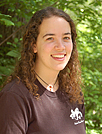 |
|
| Haley Wicklein |
Haley Wicklein, a former UNH graduate student and now a research assistant in the ESRC Terrestrial Ecosystem Analysis Laboratory, was the lead author on a paper published in Oecologia, an international peer-reviewed journal publishing research in a range of topics related to plant and animal ecology. Coauthors on the paper, titled "Variation in foliar nitrogen and albedo in response to nitrogen fertilization and elevated CO2," include ESRC's Scott Ollinger, Mary Martin, Lucie Lepine, and Michelle Day.
